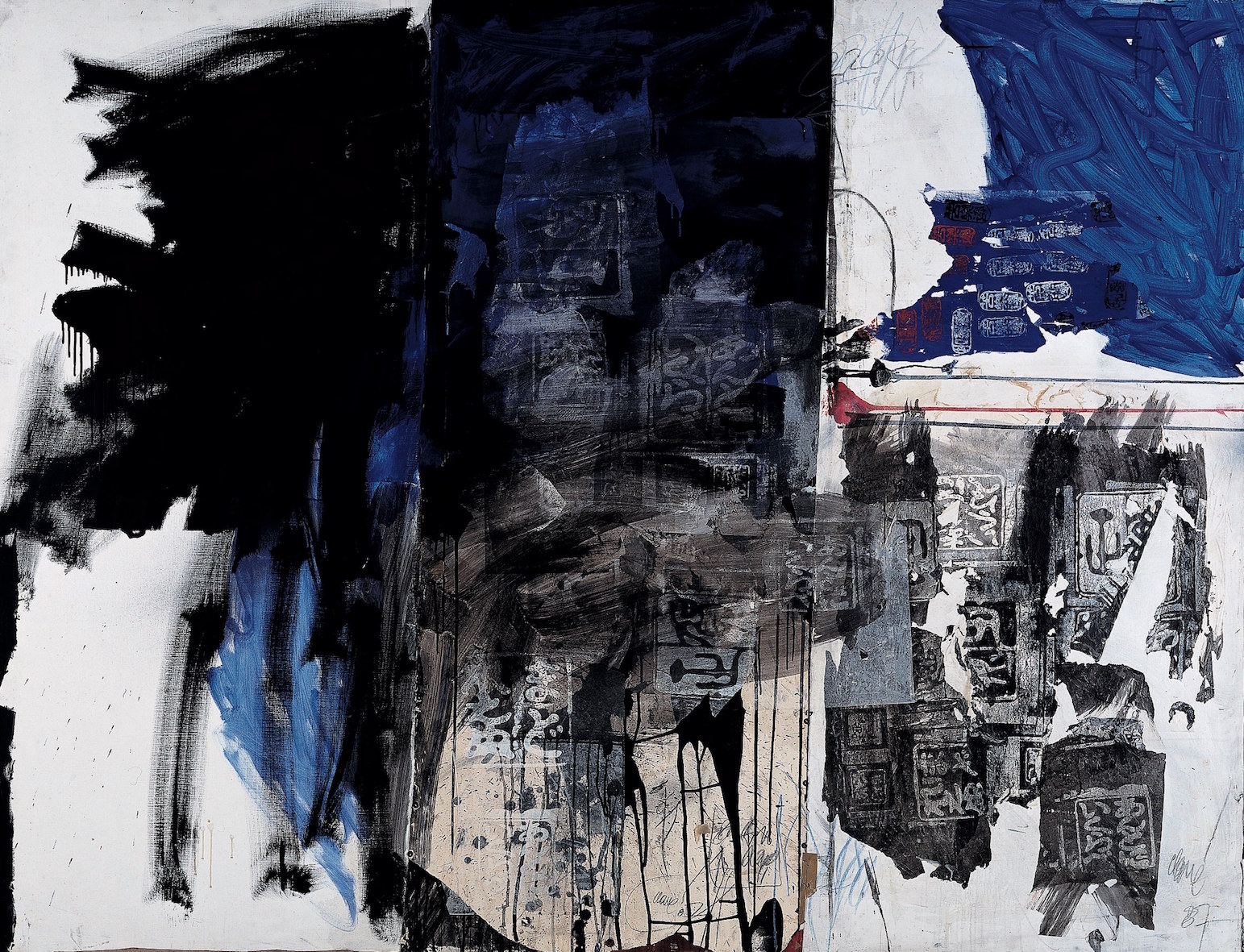In 1986, Clavé travelled to Japan for a second time where his works were being exhibited in Tokyo, Osaka and Hakone.
He found the country as fascinating as the last time he’d visited in 1972: Japan had entered a modernity that was dreamt about by the Europe of the 1980s. Yet the traditional Japan was still alive, even when surrounded by aggressive neon lights, the continuous hubbub of the city and the futuristic architecture. The Japanese calligraphy, the Ukiyo-e (meaning “image of the floating world”, which are paintings and prints of the Edo era) and the traditional use of very graphic seals fed Clavé’s imagination. When in Japan he didn’t sketch, but rather he took photos and shot a couple of Super 8 short films, which he later used once back in France.
Upon his return, Clavé gave free rein to the inspiration he’d found, and his creations were gathered together under the title “Retour du Japon” (“Back from Japan”). Most of these were exhibited a year later at the Sala Gaspar in Barcelona.
Clavé made the traditional technique of the Chinese Ink his own, while mixing it with collage of various papers and oil – mediums that were usually his favourites. The scope of the canvas underwent a transformation because of this approach: Clavé became the guest of the Extreme Orient and apprehended the filled and empty spaces, the silence, the visible and the invisible. Clavé’s homage to Japan was rich: Kakémonos du cap Saint-Pierre, Tinta Xina, or Variations sur une affiche (which refers to the exhibition of these works at the Sala Gaspar in the spring of 1987).
Abans d’acabar perfectly illustrates Clavé’s creativity during this period. At first glance, the spectator discovers a black and blue triptych. But when looking at the work more closely, one notices that the proportions of the three panels are those of a traditional Japanese screen of the Edo era (1603-1868), which are long rather than wide, distinct and yet linked owing to the fluidity of the pattern. But what “pattern” is there to see? While the background is cadenced by filled and empty spaces, and entangled masses, the eye is first struck by the use of these various seals, sometimes glued together, ripped or overlapping each other. Clavé was enamoured by the use of this seal (“hankos”); with his name on it, or rather an extreme orient version of it. The inking process, the use of the seal and its positioning in the artwork are considered a true art form in Asia, and Clavé paid tribute to this art by embracing this search for a balance between empty and filled spaces. In some other artworks of this series “Retour du Japon”, the inking is only limited to the use of the traditional blood-like red colour. In Abans d’acabar, the inking is alternatively white, black or grey, with the aim of finding a balance between the colours. The title itself Abans d’acabar, meaning “avant la fin” (before the end), could imply that the work was created at the end of 1986… This explanation of the title won’t be enticing enough for poets, who may rather interpret it in terms of a game of balance, of empty and filled spaces, suggestions and openings to infinite possibilities.
In March 2011, the first site entirely dedicated to Clavé’s art opened in Yamanashi, near Tokyo. Tadao Ando designed the Clavé Gallery, also named the Museum of Light. The inauguration of the building took place 24 years after the tribute paid by Clavé to another renowned Japanese architect, Arata Isozaki.

